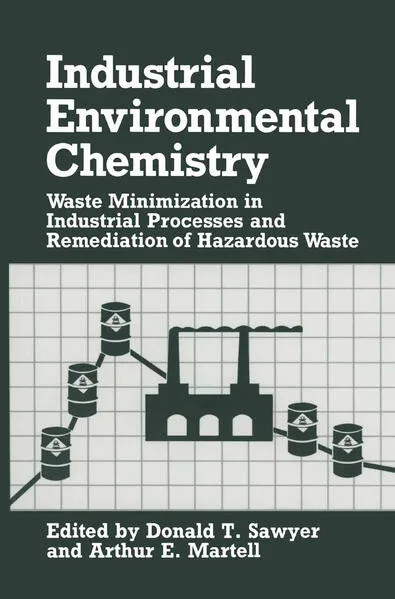Industry-University Cooperative Chemistry Program Symposia
Chronologie aller Bände (1 - 1)
Die Reihenfolge beginnt mit dem eBook "Industrial Environmental Chemistry". Wer alle eBookz der Reihe nach lesen möchte, sollte mit diesem Band von Donald T. Sawyer beginnen. Die Reihe endet vorerst mit diese Titel.
Der zweite Teil der Reihe "Industrial Environmental Chemistry" ist am 29.10.2013 erschienen.
- Anzahl der Bewertungen für die gesamte Reihe: 0
- Ø Bewertung der Reihe: 0
- Autor: Sawyer, Donald T.
- Anzahl Bewertungen: 0
- Ø Bewertung:
- Medium: E-Book
- Veröffentlicht: 11.12.2013
- Genre: Sonstiges
Industrial Environmental Chemistry
This monograph consists of manuscripts submitted by invited speakers who participated in the symposium "Industrial Environmental Chemistry: Waste Minimization in Industrial Processes and Remediation of Hazardous Waste," held March 24-26, 1992, at Texas A&M University. This meeting was the tenth annual international symposium sponsored by the Texas A&M Industry-University Cooperative Chemistry Program (IUCCP). The program was developed by an academic-industrial steering committee consisting of the co-chairmen, Professors Donald T. Sawyer and Arthur E. Martell of the Texas A&M University Chemistry Department, and members appointed by the sponsoring companies: Bernie A. Allen, Jr., Dow Chemical USA; Kirk W. Brown, Texas A&M University; Abraham Clearfield, Texas A&M University; Greg Leyes, Monsanto Company; Jay Warner, Hoechst-Celanese Corporation; Paul M. Zakriski, BF Goodrich Company; and Emile A. Schweikert, Texas A&M University (IUCCP Coordinator). The subject of this conference reflects the interest that has developed in academic institutions and industry for technological solutions to environmental contamination by industrial wastes. Progress is most likely with strategies that minimize waste production from industrial processes. Clearly the key to the protection and preservation of the environment will be through R&D that optimizes chemical processes to minimize or eliminate waste streams. Eleven of the papers are directed to waste minimization. An additional ten papers discuss chemical and biological remediation strategies for hazardous wastes that contaminate soils, sludges, and water.
